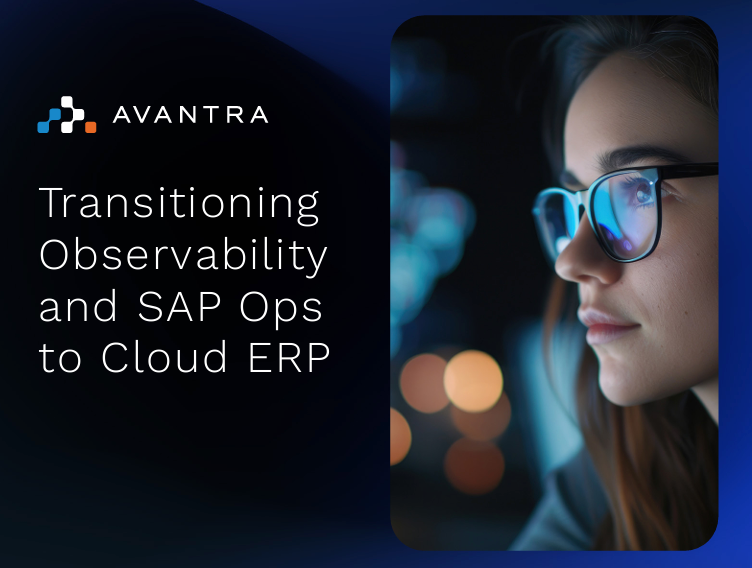4 min read
Digital Transformation: Navigating the Challenges of SAP on the Cloud
By: Tyler Constable on Jan 31, 2019 9:26:02 PM

Cloud migration is supposed to improve your SAP system performance, but it could be an expensive move if you’re not addressing the challenges SAP on the cloud brings.
To beat the 2025 deadline SAP set for all users, enterprises and MSPs are actively working on migrating to HANA, and often this process is done while migrating SAP to the cloud. Though that date could be a moving target, most organizations do recognize the value of SAP cloud migration as a way to improve operations and cost efficiency, accelerate time-to-value, and offer clients innovative reports, services, and products.
While operating on IaaS platforms offers the potential for more dynamicity than on-prem infrastructure, many SAP users are finding that running and monitoring SAP on the cloud comes with a set of serious challenges that companies aren’t always aware of prior to an SAP cloud migration.
Read on to discover three of the most arduous challenges organizations face when navigating SAP cloud integration.
1) Loss of Visibility into SAP Metrics
Cloud platforms like Microsoft Azure, Google Cloud Platform (GCP), and Amazon Web Services (AWS) do not have insight into SAP systems that they can rely on to automate their scaling. Gaining this insight requires the use of SAP-specific performance monitoring solutions. Cloud providers offer auto-scale tools based on operating system metrics such as CPU and memory usage along with file system space. Unfortunately, their built-in automated scaling doesn’t account for work processes, active users, background batch jobs, and other activities that wouldn’t necessarily be reflected by standard operating system metrics.
Without insight into an SAP system’s work processes, your cloud platforms can only manually scale up or down to stay in sync with real-time end-user needs and ensure SAP system health. As a result, your CPU usage may appear adequate for current memory usage; however, your end-users may experience wait times because interdependent work processes are queuing, causing system delays.
| Cloud providers give visibility into: |
Cloud providers lack visibility into: |
| VM OS Database |
SAP system |
With SAP system performance insights, the system is better able to automatically adjust the cloud environment dynamically, without risking under or over usage of memory within existing servers.
2) SAP on the Cloud is More Expensive than Planned
Your organization may want to migrate to the cloud to save money, but without dynamically scaling down the cloud size, the cloud can be more expensive than on-prem as you will always pay for maximum capacity. Even with the cloud provider’s automatic cloud scaling options, you risk disrupting or corrupting the database if you shut down an app server while the system is running.
SAP requires a graceful and methodical shutdown. Auto-scaling functionality without granular purpose-built SAP system performance insight will not give you the capability to spin down cloud resources that you need to reduce costs. It could also cost you much more to restore data from an incorrect shutdown.
With the right auto-scaling tools, your organization would be able to scale out or up and in or down as needed.
Here’s the difference between scaling up and down versus scaling in and out:
- Scaling up means that you add more resources such as hard drive space, memory or even additional processing power to an existing server
- Scaling out consists of spinning up new cloud servers and SAP instances, if properly used on-demand, it adds resources when the system is in peak usage
- Scaling in would be turning off unused servers in non-prime hours: This includes turning off non-production servers or SAP systems that may not be required over the weekend when no one is using them and spinning them up again on Monday morning
When you lack the ability to scale down servers during non-peak hours because of a lack of SAP system operations insight, you end up spending unnecessary funds on unused cloud resources. To save money, you need to use cloud scaling tools that give your organization on-demand, dynamic scaling abilities.
3) Cloud Servers Are Dynamic - SAP on the Cloud is Not
It’s no secret that moving SAP from an on-prem ERP system to trusted cloud platforms like Microsoft Azure, AWS, and GCP is seen as a risky but necessary move to maintain competitive advantages. As Peter Färbinger, Editor-in-Chief of E3 Magazine, detailed, cloud migration anxieties stem mainly from a need for seamless functionality. As he said in this article:
“Functionalities inside core applications have to remain integrated into the system, because only then can business processes be efficiently displayed.”
One of these integrations is the ability to adjust the size of the cloud systems based on the SAP system’s actual performance needs, only using system resources when necessary. On its own, your cloud servers and hybrid systems cannot provide you with the efficiency they promised you. You have to increase the efficiency of your SAP system’s foundation by providing actionable insights that let the system to operate at the level of dynamicity that cloud servers offer.
With the right SAP system performance management tool you can:
- Scale-out quickly and automatically, without costing you extra for unused data storage
- Manage your SAP hybrid and multicloud landscape in a single view rather than through each and every cloud server platform and separately through the on-prem system
If your organization migrates your SAP operations to the cloud without the proper tools specifically for SAP automated scaling, you can end up with slow production times due to system overload or paying for unused resources.
Use SAP system performance information to determine real-time cloud resources and save both effort and money with cloud-optimized SAP management.
To learn more about the challenges of managing and monitoring SAP on the cloud and how you can overcome them, listen to Avantra’s webinar on the topic.
Related Posts
Smart Cloud Automation - SAP on Public Clouds
Enterprises and Managed Service Providers (MSPs) are finding that implementing and leveraging the...
Failure to Automate = Failure to Operate SAP in the Cloud
Much of SAP logic was written before cloud computing. So simply migrating on-premises SAP systems...
How CIOs can improve business results through SAP and cloud management
By effectively and consistently managing SAP and the cloud CIOs can actively improve business...




